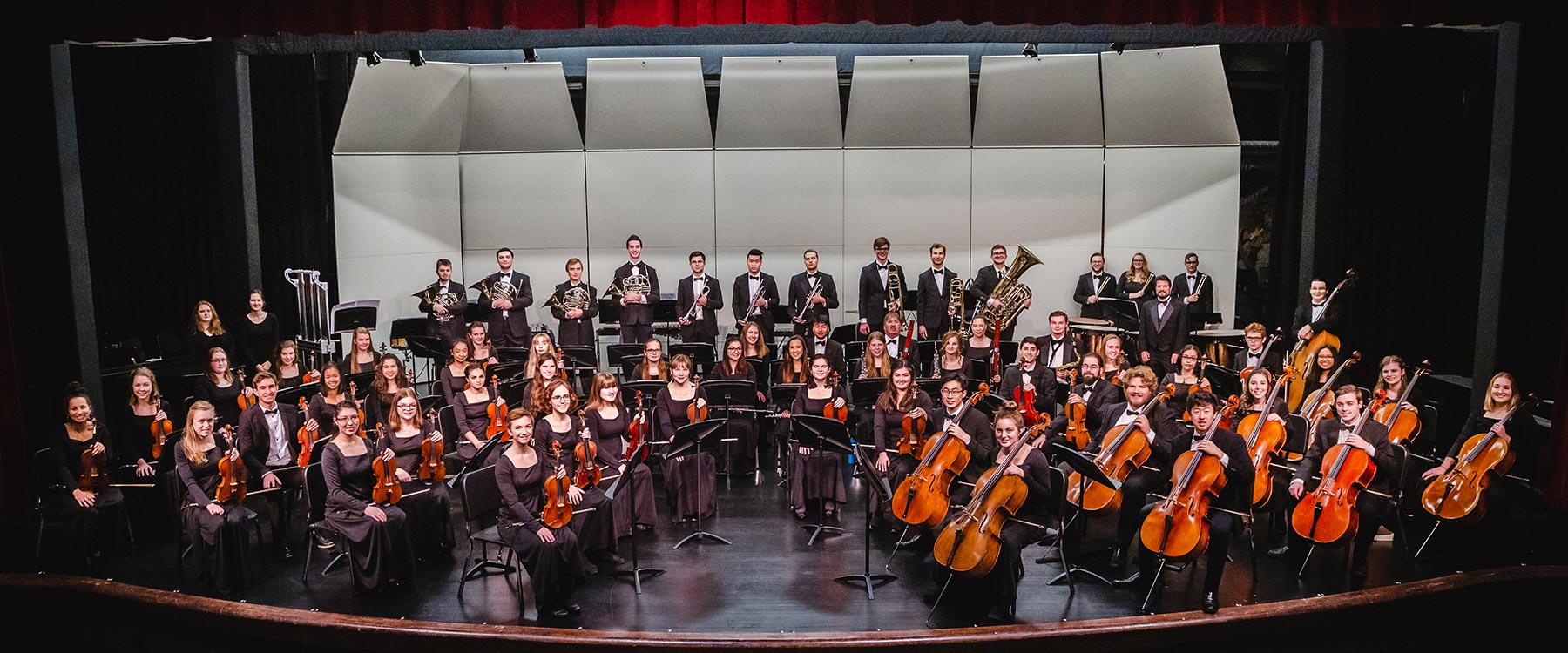
Orchestras are renowned for their captivating performances, intricate compositions, and the harmonious synergy of talented musicians. Delving into the world of orchestras unveils a rich tapestry of history, artistry, and technical prowess. Whether you're an avid classical music enthusiast or simply intrigued by the inner workings of these grand ensembles, the following collection of 19 orchestra facts promises to illuminate and inspire.
From the origins of orchestral music to the diverse roles within an orchestra and the sheer magnitude of instruments at play, there's a wealth of intriguing details to uncover. Let's embark on a captivating journey through the symphonic realm, where the resonance of strings, brass, woodwinds, and percussion converges to create awe-inspiring auditory experiences. Join us as we unravel the enchanting secrets and remarkable facets of orchestras, shedding light on their enduring significance in the realm of performing arts.
Key Takeaways:
- Orchestras, rooted in Greek dance, evolved from small ensembles to versatile groups performing diverse genres, collaborating with artists, and embracing digital platforms to reach global audiences.
- The conductor, lead violinist, and rigorous rehearsals are essential for orchestras to achieve unity, precision, and artistic excellence while upholding tradition and embracing innovation.
The word "orchestra" comes from the Greek word "orcheisthai," which means "to dance."
The term "orchestra" has its roots in ancient Greece, where it originally referred to the space between the stage and the audience in a theater. It was the place where the chorus and dancers performed, and the word "orchestra" is derived from the Greek "orcheisthai," meaning "to dance."
The modern orchestra typically consists of four sections: strings, woodwinds, brass, and percussion.
The orchestra is a versatile ensemble comprising four main sections: strings, woodwinds, brass, and percussion. Each section contributes distinct timbres and textures to the overall sound, creating a rich and diverse musical tapestry.
The first orchestras were smaller ensembles used for chamber music.
In the 17th and 18th centuries, orchestras were smaller in size and primarily performed chamber music in palaces and private residences. These ensembles evolved over time to encompass larger and more diverse instrumentation, leading to the modern symphony orchestra.
The orchestra conductor plays a crucial role in leading and unifying the ensemble.
The conductor serves as the leader of the orchestra, guiding the musicians through rehearsals and performances with precise gestures and interpretations of the musical score. Their role is pivotal in shaping the orchestra's sound and ensuring cohesive and expressive performances.
Orchestras perform a wide range of musical genres, including classical, contemporary, film scores, and popular music.
From classical masterpieces to contemporary compositions, film scores, and popular music adaptations, orchestras showcase a diverse repertoire that appeals to a broad audience. This versatility enables orchestras to engage with various musical styles and cater to diverse listener preferences.
The violin is a prominent instrument in the orchestra, often leading the string section.
Renowned for its expressive capabilities and agile melodic lines, the violin holds a prominent position in the orchestra, frequently leading the string section and delivering captivating solo performances. Its versatility and emotive qualities make it an indispensable component of orchestral music.
Orchestras often collaborate with guest soloists and conductors to enrich their performances.
Collaborations with esteemed soloists and guest conductors bring fresh perspectives and artistic interpretations to orchestral performances, fostering dynamic musical exchanges and enhancing the overall artistic quality of the ensemble.
Orchestras undergo rigorous rehearsals to achieve precision and unity in their performances.
Dedicated rehearsal sessions are essential for orchestras to refine their interpretations, synchronize ensemble playing, and achieve a harmonious blend of musical voices. These meticulous rehearsals contribute to the orchestra's ability to deliver polished and captivating performances.
The orchestra pit is a sunken area in front of the stage, accommodating the musicians during operatic and theatrical productions.
In operatic and theatrical settings, the orchestra pit provides a designated space for the musicians, ensuring optimal acoustics and facilitating seamless coordination between the musical accompaniment and the onstage performers.
Orchestras often participate in outreach programs to engage with diverse communities and promote music appreciation.
Through educational initiatives, community concerts, and outreach programs, orchestras extend their cultural impact by fostering music appreciation, nurturing emerging talent, and enriching the lives of individuals across diverse communities.
The symphony orchestra, with its expansive instrumentation and robust sound, is renowned for performing symphonic works.
Distinguished by its extensive array of instruments and grandiose sound, the symphony orchestra is celebrated for its compelling renditions of symphonic compositions, captivating audiences with its expressive interpretations and sonic grandeur.
Many orchestras have embraced digital platforms to share performances and connect with global audiences.
In the digital age, orchestras harness online platforms and streaming services to share live performances, archival recordings, and behind-the-scenes content, cultivating a global audience and expanding their reach beyond traditional concert venues.
Orchestras prioritize diversity and inclusivity, striving to create an equitable and welcoming environment for musicians and audiences.
Embracing diversity and inclusivity, orchestras endeavor to cultivate an environment that celebrates varied perspectives, fosters artistic collaboration, and ensures equitable opportunities for musicians and audiences from all backgrounds.
The conductor's baton serves as a visual and expressive tool for conveying musical direction and interpretation.
The conductor's baton, a symbol of authority and artistic expression, guides the orchestra through nuanced gestures, shaping the musical phrasing, dynamics, and overall interpretation of the score.
Orchestras often engage in cross-disciplinary collaborations with dance companies, visual artists, and multimedia creators.
By collaborating with dance companies, visual artists, and multimedia creators, orchestras explore innovative artistic intersections, creating immersive performances that integrate music with diverse art forms and multimedia elements.
The concertmaster, or lead violinist, serves as a liaison between the conductor and the orchestra, leading the string section and articulating musical nuances.
As the principal violinist, the concertmaster assumes a pivotal role in the orchestra, leading the string section, interpreting musical nuances, and serving as a liaison between the conductor and the ensemble, contributing to the cohesive execution of the musical performance.
Orchestras frequently commission new compositions to enrich the contemporary repertoire and support emerging composers.
By commissioning new works, orchestras contribute to the evolution of contemporary music, fostering creativity and innovation while providing opportunities for emerging composers to showcase their artistic vision and contribute to the orchestral canon.
The orchestral score, a comprehensive musical notation, encompasses the individual parts for each instrument within the ensemble.
The orchestral score serves as a detailed blueprint for the entire ensemble, encompassing the musical notation for each instrument, facilitating collaborative rehearsals, and guiding the musicians in achieving a unified and expressive performance.
Orchestras uphold a tradition of artistic excellence while embracing innovation and evolving musical landscapes.
Balancing tradition and innovation, orchestras uphold a legacy of artistic excellence, adapting to evolving musical landscapes, and engaging with diverse audiences to ensure the enduring vitality and relevance of orchestral music.
Conclusion
In conclusion, orchestras are not just musical ensembles; they are living, breathing entities that have evolved over centuries to become the epitome of artistic expression and cultural significance. From their humble beginnings in the courts of Europe to their modern-day global presence, orchestras continue to enchant audiences with their unparalleled sonic grandeur. The collaborative synergy of talented musicians, the timeless repertoire, and the unwavering dedication to musical excellence make orchestras a cornerstone of the performing arts world. As we delve into the fascinating world of orchestras, we uncover a rich tapestry of history, innovation, and sheer sonic beauty that transcends time and resonates with the depths of human emotion.
FAQs
What is the role of a conductor in an orchestra?A conductor serves as the musical director and leader of an orchestra, guiding the musicians through performances by setting the tempo, shaping the phrasing, and ensuring cohesive interpretations of the musical score.
How many types of instruments are typically found in an orchestra?Orchestras typically consist of four main instrument families: strings, woodwinds, brass, and percussion. Each family encompasses a diverse range of instruments that contribute to the orchestra's rich and varied sound.
Orchestras captivate audiences worldwide with their mesmerizing performances. Curious about the TransSiberian Orchestra's spellbinding concerts? Intrigued by the City of Birmingham Symphony Orchestra's rich history? Fascinated by the unbelievable facts surrounding Konserthuset Malmö? Explore our collection of articles that delve into the captivating world of orchestral music. From the TransSiberian Orchestra's dazzling light shows to the CBSO's legacy of excellence, and the surprising truths about Malmö's iconic concert hall, embark on a journey of discovery through the enchanting realm of symphonic sound.
Was this page helpful?
Our commitment to delivering trustworthy and engaging content is at the heart of what we do. Each fact on our site is contributed by real users like you, bringing a wealth of diverse insights and information. To ensure the highest standards of accuracy and reliability, our dedicated editors meticulously review each submission. This process guarantees that the facts we share are not only fascinating but also credible. Trust in our commitment to quality and authenticity as you explore and learn with us.


